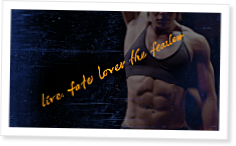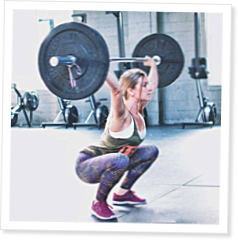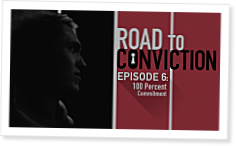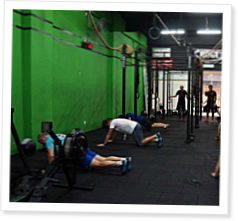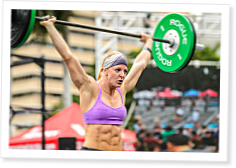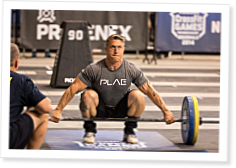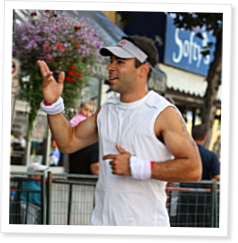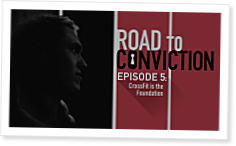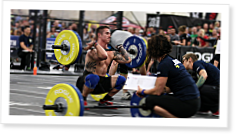First, the Nutrition of the Sixties
by Dr Ken Leistner
“Our excitement in finally arriving in California was in part due to the expectation that we would discover as yet unknown secrets, secrets that would allow some sort of miraculous and rapid increase in muscular size and strength. Within us, there was also a hope, if not an expectation, that all of the sets, reps, and dietary manipulation we had developed were in fact, correct, and that we had not wasted a lot of precious training time.”
Read More
var addthis_config = {"data_track_addressbar":true};
Remember our sources of “legitimate information” did not extend past the muscle magazines and word-of-mouth education inside the gyms and garages where we trained.
Our excitement in finally arriving in California was in part due to the expectation that we would discover as yet unknown secrets, secrets that would allow some sort of miraculous and rapid increase in muscular size and strength. Within us, there was also a hope, if not an expectation, that all of the sets, reps, and dietary manipulation we had developed were in fact, correct, and that we had not wasted a lot of precious training time. We knew top level contest winners in our home area but we were certainly jerked into a state of reality meeting Bill Pearl’s brother Harold. The impression he made has lasted to this day. Bill Pearl was huge, and usually maintained a bodyweight, as he told us, of approximately 225 pounds. He said that when he prepared for contests, he would first diet down and then gain weight. This was a rather unique theory for us because everyone that we knew on the east coast that either lifted in the relatively new sport of powerlifting, or competed as a contest level bodybuilder, first allowed their weight to go up, becoming as big and strong as possible, and then trimmed down, to either enter a specific weight classification or become more defined. Bill would first reduce his body fat levels, bring his overall weight down, and then build muscle on top of that.
Decades after being 5 AM training partners, the great Bill Pearl and the author get together at a 1998 trade show. Though a world famous bodybuilder, Bill Pearl lifted weights on par with the strongest competitive lifters during their 1960s sessions.
More typical was Dave Draper, who by the time we got to California was another of Weider’s leading advertising lights. Dave was also huge by anyone’s standard, and rock hard. His California tan added to the visual presentation of “cut to ribbons,” and his overall appearance was even more startling because I had known him from the back room office and storage space of Leroy Colbert’s health food store in Manhattan. Dave did in fact build himself to a very high bodyweight, perhaps 265 pounds, and was criticized by some as being “big but too soft.” Having the snow white complexion that comes with living in Secaucus, New Jersey year round only added to the impression that his muscles, while certainly well developed, were also hidden under a downy covering of “thick skin” as we used to call it. Of course after moving to California, training in the famous Dungeon, and bringing his weight down approximately thirty pounds to 235, he became one of the undisputed all time greats in the bodybuilding field.
Dave Draper already trained down from 260 to perhaps 245, starring as David The Gladiator, a Los Angeles based television show.
Dave dieted down to cut-up 235 for mid-1960s contest victories.
Bill’s approach was unique, and at this time he was in fact preparing for a major contest and series of posing exhibitions, and thus was going up. His goal was 240 pounds but whatever Harold’s weight was at this same time, it was enough to make Bill, with no disrespect intended towards one of the greatest physiques of all time, appear to be “just one of the lifting guys” when standing around in street clothes. Harold was wide, thick, and scary! Before we departed on our great adventure, we had been told a little about Harold but that “little bit” was enough to make us wary. With a number of top level physique competitors and odd-lift contest trainees in the storefront gym we frequented, the “inside news” about the name lifters and bodybuilders around the country was often a topic of conversation. Because a few of the fellows had traveled to California or competed in different states, we were fairly certain we received the “real story” about many of the stars. We knew that Harold had spent time in prison, which was not an unusual occurrence among many we were acquainted with, but we were also told that while in prison, he had amped up his training and gone as high as 303 pounds while maintaining no more than a thirty-seven-inch waist. To add an exclamation point to that description, we listened to a more detailed presentation of a guy who no one messed with, even in prison, who was as strong as he was large, and who was Bill’s polar opposite in temperament.“The brothers have huge physiques, everyone knows who Bill Pearl is, but Harold is bigger. That thirty-seven-inch waist measurement wasn’t all sucked in, this guy is really all muscle and he doesn’t have much to say.” At least that was one definitive description we received. Harold was nice enough while I stood back a bit and Jack introduced himself and said that Bill “knows I’m supposed to be here.” It was enough to get us through the front door of the gym on Manchester Avenue and we sort of stared at each other and shook our heads as if to say, “If the guys out here are as big as Harold, we really don’t know what we’re doing” and it wasn’t as if Jack at 225 pounds, and myself at 230 were small. We looked around and were greeted by Larry, the proprietor of the juice bar that was located within the gym, in what was more or less a side room. Of course, the entire gym was so unlike what we were used to. Not fancy or large by today’s standards, it was very much other-worldly to us with its outdoor swimming pool, skylights, varied selection of equipment, very muscular guys, and the juice bar. Who had a juice bar in a gym? I’m not sure we had ever seen a juice bar prior to this, but Larry, who himself was short, stocky, and an obvious lifter, was friendly and said that Bill was due in shortly.He asked if we wanted a drink and, “Of course, “a protein shake, please” would have been and was the obvious response. When he opened a can of MLO protein powder, yet another revelation struck me: “A brand of protein powder I have not seen before – how much don’t I know?” I had actually spent many years having my entire family remind me of the vast amount of knowledge I didn’t possess but I thought I had a handle on protein powder. The Hoffman, Weider, and Blair names were the big ones, but MLO was new to me, a brand produced by Millard Williamson, winner of a number of the local Mr. Muscle Beach type of contests, and a chemist. I also knew about some of what to my interpretation were brands of “old people’s protein powder,” like Schiff’s, but because lifters and bodybuilders never mentioned these, it was as if they did not exist. {pagebreak}Remember our sources of “legitimate information” did not extend past the muscle magazines and word-of-mouth education inside the gyms and garages where we trained. Another of my many jobs had me stocking shelves in the only health food store in the area. Fulton Health Foods in Hempstead was not geared to bodybuilding but more towards the “physical culture” crowd, offering a lot of soy based “fake meat” products, organic foods, and supplements. While some of Hoffman’s offerings were displayed, we sold primarily Schiff products that I believed were for “non-athletes.” The elderly owners of the store, a lovely husband and wife team who were die-hard devotees of “clean living” and devout religious activity, served their corresponding clientele with Schiff Bio-Foods products which were actually of very high quality. Schiff began as a whey production company and expanded to vitamin, mineral, and brewer’s yeast supplements. They filled a market that developed during World War II for dried or dehydrated products, including a soy based powder meant to be a source of dietary protein. If however, the weight training populace was not using a product, we didn’t think much of it.We gazed at the handwritten board above the juice bar counter and saw “Guava Juice” and “Mango,” and I would have been embarrassed to make the admission that I had no clue what these exotic sounding things were. Larry explained that he was going to college and studying nutrition and that he had recently bought the juice bar from Pat Casey who had moved down the coast to open his own gym, although he still trained with many from the Bill “Peanuts” West crew on weekends. While I was trying to take in so much new information, Harold came in, sat down next to us, asked Jack how he came to know his brother, and reached around the juice bar counter… for a large glass and a bottle of Wild Turkey Bourbon!Harold proceeded to pour a full drinking or “milk glass,” twelve full ounces of Wild Turkey, stare at us, and gulp it down. We were speechless, and watched him walk onto the gym floor. Believing in a muscle magazine-driven lifestyle that warned against cigarettes, alcohol, and late night carousing, I was stunned, especially when looking at what could have been the largest muscular physique I had seen up to that point in time. In Bill Pearl’s 2003 book, “Beyond The Universe – The Bill Pearl Story,” he is clear that for much of their lives he and his older brother Harold had a contentious relationship, highlighted by many physical confrontations. They made peace at a much later age, but after I got to know Bill a bit, he conceded that Harold was often “not a very nice guy,” and there was no doubt he could kick almost anyone’s ass if he chose to do so. I was also told by gym members on that very first visit that he did in fact, often choose to do so! His version of a juice bar drink would not be one that we believed should be copied to become bigger and stronger.When Bill arrived, he was told that “some guys from New York were here to see him,” and he was no doubt disappointed that he was looking at Jack and me instead of Chris Dickerson and Dennis Tinerino, both of whom traveled to Bill’s on occasion for training instruction and information. He could not have been more gracious, and he treated Jack like a long-time acquaintance instead of a fan who had written a series of inquiring letters. In a society that was much less consumer driven than it is today, Bill’s attitude and behavior were more typical among weight training comrades than not. As we spoke, Bill asked where we had arranged to stay during our time in California. Of course, this rather minor point was never discussed, and I don’t believe Jack and I had given it the slightest bit of consideration. The goal was to get to Southern California and get a lot stronger and bigger. We obviously had to live some place, but in truth not once did that come up in our hasty conversations or my conscious thoughts prior to leaving New York.
Bill Pearl to the left of Sergio Oliva, and his wider-than-Sergio appearance is very much how he appeared when the author joined him as a 5 AM training partner.
Again the ultimate gentleman, Bill explained that the increasing violence in the neighborhood had recently driven him and his wife Judy out of the apartment he had on the second floor above the gym, and they had moved into a house in a safer, quieter neighborhood. He further stated that if it “wasn’t complicated by the current circumstances, you guys could stay upstairs for a few months.” The “current circumstances” as Bill clarified, included the fact that Harold was “living up there with three women.” Again, we were dumbfounded, but Bill said, “Yeah, I don’t know if they’re all up there at the same time, I don’t ask, but he has three regulars that stay with him, so it would get a little bit uncomfortable if you guys were up there too.” The last thing I saw myself doing was sharing an apartment with Harold Pearl, who might have believed I was infringing upon his privacy. Wanting to remain alive and without broken bones for a while longer, I thanked Bill for his thoughtfulness. He then said, “If you guys want to sleep on the floor of the gym, I could lock you in for the night but I’m back by 4:30 AM or so to start training. Let me know.”From my perspective, wrapping up in a sleeping bag in Bill Pearl’s Gym was infinitely better than almost any other lodging offer one could ever get. Wow, we could add muscle just from being in the building where so many greats had trained. I did give thought to the huge weights that were lifted by the powerlifters, football players, track athletes and Olympians, bodybuilders, and the Pearl Brothers themselves, and considered that sleeping on the floor might have some sort of secondary growth effect. We wanted to train then and there, but explained to Bill that while it was still early in the day, we also wanted to locate and meet Rheo H. Blair. Bill freely stated that “he has some good products,” so we promised to return in the evening.We were off to see Rheo Blair and learn about nutrition and the type of food and supplement intake that would find both Jack and me tipping the scales perhaps twenty to thirty pounds heavier within weeks. At least that was the general idea, and we were certainly very much like two blank canvases – or perhaps more accurately, two empty minds ready to be filled. We of course had no idea where Blair was located. There was an address at the bottom of each of Blair’s Iron Man Magazine ads so that was our first stop. Unfortunately, that proved to be a large office building in downtown Los Angeles, a postal drop where the inquiries and checks were first delivered. The light bulb then went on, and I rummaged through one of the large brown paper grocery store bags that held some of my clothing and other items. I had saved the correspondence I had built up with Blair over the course of a year or more, and recalled that I wrote to a definitive street address. When Rheo wrote to me, it came from his home, or more accurately, home/office/warehouse and there it was on the envelope: Rose Avenue in Hollywood. Oh my gosh, I had forgotten he lived in Hollywood – we were going to the glamorous part of Los Angeles!You should know that the Hollywood of the mid-1960s was very much like being on The Bowery of the Lower East Side of New York City. It was a pit, crawling with criminal types, pimps, hookers, muggers, scam artists, and every out-of-town freak looking to break into show business. It was filthy, with more garbage on the streets of the theater and commercial part of Hollywood than most of Manhattan. I’m sure that the mansions we envisioned existed, but most of Hollywood’s residential area consisted of small, bungalow-type homes and two-story apartment buildings. With no notice or thought to call ahead – perhaps “with no warning” would be most accurate – we drove to the address noted on the mailing envelope, walked to the front door, and knocked. {pagebreak}
Larry Scott was a bodybuilder that the author witnessed as a visitor to Blair’s house, taking supplements home with him. Freddy Ortiz trained at Vince’s Gym for a while, and though he tried the supplements, built a terrific physique with what can charitably be termed, “less than perfect attention to nutritional detail.” What was not publicized, was that many powerlifters also utilized the Blair Program.
The house was white, neat, and clean, with a well kept front lawn. Sure enough, it was Rheo H. Blair, in the flesh, and dressed really well. We were never dressed really well, although as polite young men and athletic representatives of our school, we looked a lot better than most hippies. Still, I am sure our appearance startled Blair. Talking in our mile-a-minute, New York accented, hyperactive machine-gun delivery, replete with the usual grammatical modifiers like “fucking” and “really, no shit,” I reminded him of the correspondence we had and politely inquired if we could have some of his personal time. Why Blair, like almost everyone else we met, did not just slam the door in our faces and call the local police is beyond me, but he instead behaved as if he knew us well and was actually pleased to see us.During our entire first meeting, one that lasted for hours despite the fact that we made it clear we did not have a lot of money to purchase his program of supplements, we were treated as considerately as possible. Discovering later that Rheo charged quite a bit of money for the type of “nutritional consultation” we were receiving at no cost, it’s almost as if we had entered the Circles Of Hell once we arrived in California, yet had divine protection as we wandered around. Wanting to be accurate, I am sure that the information Rheo gave us will not only reflect what he said to so many others, but will also be a repetitive abstract of what has been so often written about his approach to muscle and strength enhancement nutrition. It is, however, worth the review for those familiar with the history, because if one truly wanted to “get a feel for” or know the real story about eating for muscle in the 1960s, we learned much of that specific inside story that day.After telling Rheo that we had driven for fifty-four hours to arrive in town, the first thing he said was, “You boys must have a protein,” and “a protein,” we came to learn, referred to a shake. The standard feeding was six ounces of heavy cream, six ounces of whole milk, 1/3 cup of Blair’s Milk and Egg Protein Powder, and one of the numerous bottles of flavoring that were lined up in his cabinet. We went for the coconut, and he put a few drops of coconut extract into the blender and let it rip.Forgetting that we had not eaten since perhaps midnight while on the road, this drink tasted great, and of course made us feel very special since the man himself had made it for us. What also impressed me was the fact that Rheo reached into his kitchen cabinets for the powder and the numerous supplement capsules, tablets, and pills he laid out for us. Mimicking so many other published personal accounts about visits to The Blair House, we were using the same supplements and powder that the rest of the lifting public was. For us, it at least meant that the guy was being straight up and honest with us, and not slipping us special stuff while selling bullshit out the back door.This was not to say that Rheo was a regular kind of guy. Everything in the house was white, including his carpets, which necessitated taking one’s shoes off before entering. We were ankle deep in sand in every house in my beachfront neighborhood, and it was unavoidable. Even after a major bi-weekly vacuum job, our home was pretty much littered with sand and grit. Entering a home where you had to take off your shoes was really strange to me. Rheo also had a series of monkey bars attached to the ceiling, and these spanned the entire living room and perhaps went into other rooms, I just cannot be sure at this time. During that first meeting, Rheo leaped up, grabbed a bar and propelled himself across the room, traveling hand-over-hand. To two young guys like us, seeing what we believed to be an “older man” in his mid-forties jump around like Rheo did was quite impressive.Being raised in the New York City area in neighborhoods that were ethnically, racially, and religiously mixed bred a lot of tolerance. Being raised as the son of an ironworker who moonlighted as a nightclub manager gave me a street level education that was far more extensive by the age of twelve than most adults experience in a lifetime. Following my father’s lead, with his exposure to everything and everybody, I held few prejudices. At the nightclub, I had held every job possible, a wide-ranging group of tasks that included busboy, dishwasher, stage light operator, bartender, line cook, decorative ice figure sculptor, and the one guy that catered to the needs of all of the entertainers who set up shop in the dressing room area before or after their performances. If dinner needed to go to the room, I brought it. The bar set-ups of ice, glasses, pitchers, mixers, and alcohol were shuttled from the bar to the rooms by yours truly. If one of the most well known male crooners from Hollywood requested the company of a female or male companion, I was the one who escorted the visitors to the dressing room. If one of the most beautiful female singers within the industry asked for a twenty-something male or female guest to spend a few hours with her, I, as always, was the one to lead them from a back door to the dressing room area and assure privacy.Thus, upon my first meeting with Rheo, it was obvious – or at least obvious to me, though Jack was not quite so astute or seeking to be – that Rheo was homosexual. Nothing related to his sexual orientation came up in conversation, and he was often photographed with female companionship, but I sensed it and I mention it only to get the matter out of the way of this narrative. It was unimportant and unrelated to our relationship with him and the nutritional education we received from him, then or over the course of the next number of years.Rheo took a look at me and broached the subject of weight loss, getting “cut,” and “leaning out.” Say what? I explained that as a football player with very good speed and strength, I was also rather average in ability and coordination and thus served as little more than a human battering ram, already having quite a few concussions to emphasize that point of fact. I wasn’t interested in doing anything other than being as big, strong, and bomb-proof as possible. Jack had a bodybuilding sensibility and was more interested in adding definition to his already impressive size. Rheo’s first suggestion did not fly with us. As he explained it, “I usually suggest that everyone coming to me for a program lay off the lifting and stay out of the gym for a week or ten days.” The rationale was that the body was no doubt overtrained, as was typical for the era, and some rest and an immediate submersion into his “proper nutrition program” would then prepare one for optimal gains. I was aghast by the recommendation, unsure of how long it would take to find a job and be able to remain in Los Angeles, and we were intent on taking advantage of every possible training minute that we had.To Rheo’s credit, I believe he fully understood that he was dealing with two irrational individuals. It was agreed that we would continue to train. If possible, he wanted us to confine our nutritional intake to as much of his protein mixed in cream and whole milk as we could afford, and augment that with as much of his various vitamins, minerals, and special products as possible. We would take hydrochloric acid to assist in the digestion of whatever protein we took in via powder or “regular food” form. Thus, the first two items that were “musts” were the protein powder and the digestive HCl. Blair wanted us to take what were standard vitamins and minerals that “every bodybuilder or lifter took,” and the standard for the era were B Complex, C, E, and calcium in some form. The “extras,” the few golden nuggets that really separated the Blair Program from anything else, were the “free form” liver and the Soy-Bro germ oil capsules. We discussed what we could afford after tallying up what the optimal program would cost, and concluding that it looked very much like a ransom note! For our “regular food” contribution, the primary breakfast and dinner time intake would be comprised of hamburger and eggs. Rheo did not specify “hamburger” but rather “meat.” Hamburger however was the cheapest form of beef we could afford, and in viewing what we did through the perspective of time I can say that it’s a bit of a miracle that we survived, because we were purchasing the cheapest forms of ground beef that were available from the Ralph’s Market in one of the worst sections of L.A. Even at mid-1960s prices, forty cents a pound for hamburger computes to a lot of really bad meat! An occasional tomato was allowed, and we could spike our protein pudding, which consisted of a third to a half cup of powder beaten into six to eight ounces of heavy cream, with some unsweetened canned peaches and shredded coconut. Everything else was off the table and otherwise forbidden, and we were all in and off on our big time California nutritional adventure.MORE TO FOLLOW…
Part 1 Part 2 Part 3 Part 4 ::
